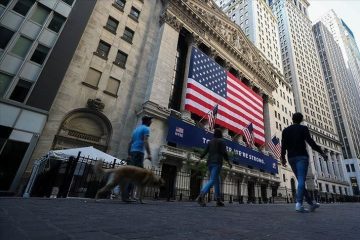The trade deal between America and South Korea has barely changed
“IT’S a horrible deal. It was a Hillary Clinton disaster, a deal that should’ve never been made,” said America’s president in April 2017. Donald Trump was threatening to scrap his country’s free-trade agreement with South Korea, known as KORUS, claiming that it had left America “destroyed”. On September 24th, after he and Moon Jae-in, his South Korean counterpart, had signed a revised deal on the sidelines of the UN General Assembly in New York, Mr Trump sounded much more emollient. “This is a great day for the United States and a great day for South Korea,” he said, having hailed a “basic redoing” of the old, “unfair” version.
In fact, KORUS has undergone something well short of a full overhaul. Most of the original 24 chapters were untouched. KORUS is just the first of many pacts Mr Trump has said he wants to negotiate; on September 26th, for example, Mr Trump announced his intention to start formal talks with Japan. The Japanese may hope the results are similarly shallow.
Even the most notable changes to KORUS are likely to have little immediate impact on America’s $ 23.1bn goods-trade deficit with South Korea (see chart), which has been bothering Mr Trump. Most of these changes concern cars, which account for most of the gap. American manufacturers will each be able to export 50,000 cars a year that comply only with American, rather than South Korean, safety standards. That is twice the old limit. But American carmakers have filled barely half their quotas for years. America’s 25% tariff on imported light trucks, which was due to go by 2021, will now remain until 2041. But South Korean firms currently sell scarcely any trucks to America, and nothing in the deal will diminish Americans’ appetite for Hyundai and Kia cars.
The revamped agreement is a modest improvement for American exporters, says Wendy Cutler, who led America’s negotiators in the first revision of KORUS in 2010. For instance, it reduces red tape in clearing South Korean customs. “But the changes build on provisions already contained in the original agreement,” she says. A cap on steel imports from South Korea, of 70% of the average in 2015-17, which is not part of the new deal but to which South Korea has agreed in return for exemption from tariffs, may also have a modest impact, reckons Brad Setser of the Council on Foreign Relations, a think-tank.
Contrary to the Trump administration’s earlier claims, the deal does not come with a side-agreement on currencies, an area in which Mr Setser believes America could have extracted more. “The fact that the original agreement didn’t tackle the South Korean government’s currency interventions was the biggest legitimate complaint about it,” he says. “If this was about getting a better deal for America, that would have been an obvious thing to address.”
After the signing, Mr Moon expressed relief that the “uncertainty” surrounding KORUS had been resolved. That is not quite true. The revised agreement contains no explicit guarantee that America will not use national security as an excuse for increasing tariffs on South Korean cars. South Korean parliamentarians, who have to ratify the modified deal, have said they may block it without such an assurance. It may be a while before the new, old KORUS comes into force.
This article appeared in the Finance and economics section of the print edition under the headline “Familiar KORUS”


